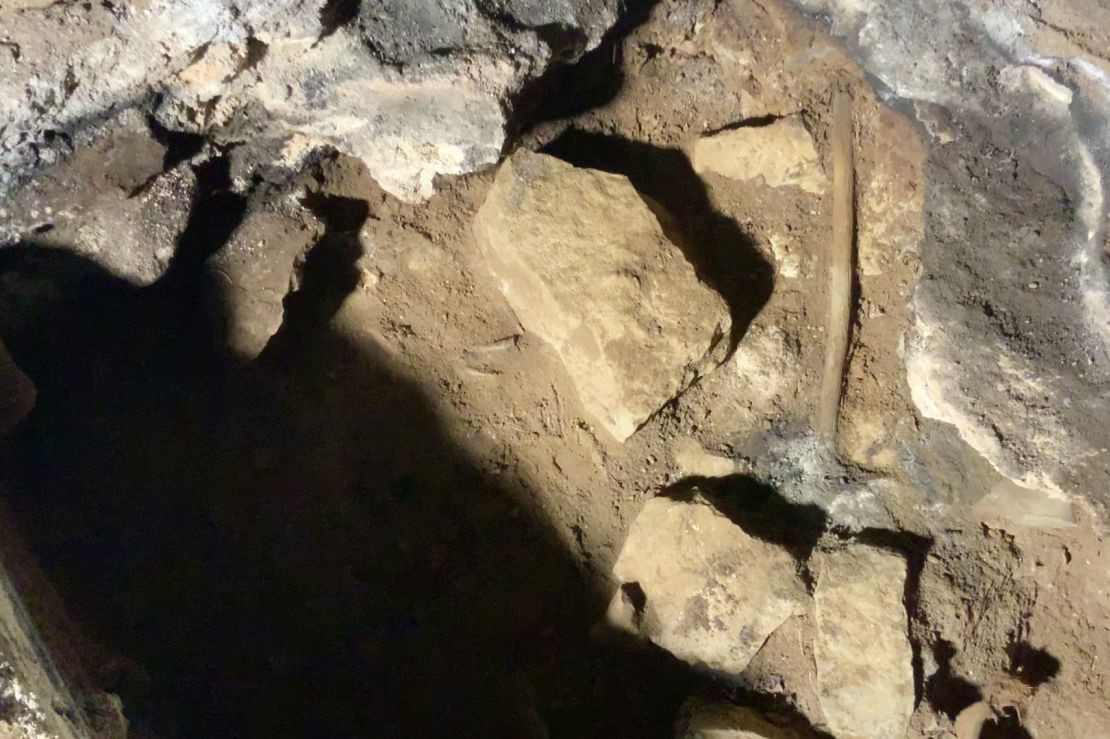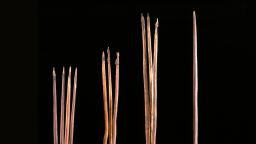Sign up for CNN’s Wonder Theory science newsletter. Explore the universe with news on fascinating discoveries, scientific advancements and more.
Buried deep in an Australian cave, archaeologists have uncovered evidence that an Aboriginal ritual may have been passed down 500 generations and survived 12,000 years, making it the oldest known continuous cultural practice in the world, according to a new study.
While investigating Cloggs Cave, situated near Buchan – a small Australian town about 350 kilometers (217 miles) east of Melbourne – researchers found a piece of wood protruding out of the ground. They cut it, and used carbon dating to determine it’s 12,000 years old, from towards the end of the last Ice Age.
“And we were going ‘Wow, what’s this?’ Bruno David, a professor at the Monash Indigenous Studies Centre in Australia who co-authored the paper, said in a recorded conversation shared with CNN. “12,000-year-old artifacts don’t survive in the ground for that long. Normally they just disintegrate.”
They also uncovered another wooden stick which, though 1,000 years younger, was remarkably similar. Both sticks were smeared with animal or human fat, found next to miniature fireplaces, and both had been “fleetingly burnt,” as detailed in a Nature Human Behaviour article published Monday.

David and his colleagues at Monash University were approached in 2017 by the GunaiKurnai Land and Waters Aboriginal Corporation (GLaWAC), which represents the GunaiKurnai people, to investigate the archaeological evidence of this ritual, which had previously been documented by the 19th-century geologist and ethnographer Alfred Howitt.
Howitt detailed the rituals carried out in Cloggs Cave by powerful GunaiKurnai people whom he dubbed “sorcerers,” “wizards,” or “medicine men and women,” but who are known as “mulla-mullung” among the GunaiKurnai people.
Their rituals would seek to harm adversaries or heal the sick by finding something belonging to the subject, attaching it to a throwing stick along with human or animal fat.
The stick was “then stuck slanting in the ground before a fire, and it is of course placed in such a position that by-and-by it falls down,” Howitt wrote in the 1880s.
GunaiKurnai Elder Uncle Russell Mullett said in a recorded conversation shared with CNN that the discovery could easily have been missed in the cave, but he credited “the spirits that still live” in the area for helping researchers unearth it.
Excavations that took place 50 years ago without consulting the GunaiKurnai people uncovered the miniature fireplaces around which these rituals centered, but researchers didn’t analyze the plant material, like the wooden sticks, in any significant detail.
“Bringing in the community way, the cultural way, with some of the scientific techniques, means that stories can be told,” David said. “And if you take just one or the other… those things wouldn’t speak to you in that way.”
As well as dating and determining the use of these sticks, archaeologists also concluded that the caves were used almost exclusively as a ritual site, uncovering no evidence of vertebrate food remains there. This finding matches with the ethnography and current GunaiKurnai knowledge, archaeologists added.
“Nowhere else on Earth has archaeological evidence of a very specific cultural practice whose performance is known from Elders and ethnography previously been tracked so far back in time,” David said in a statement.




